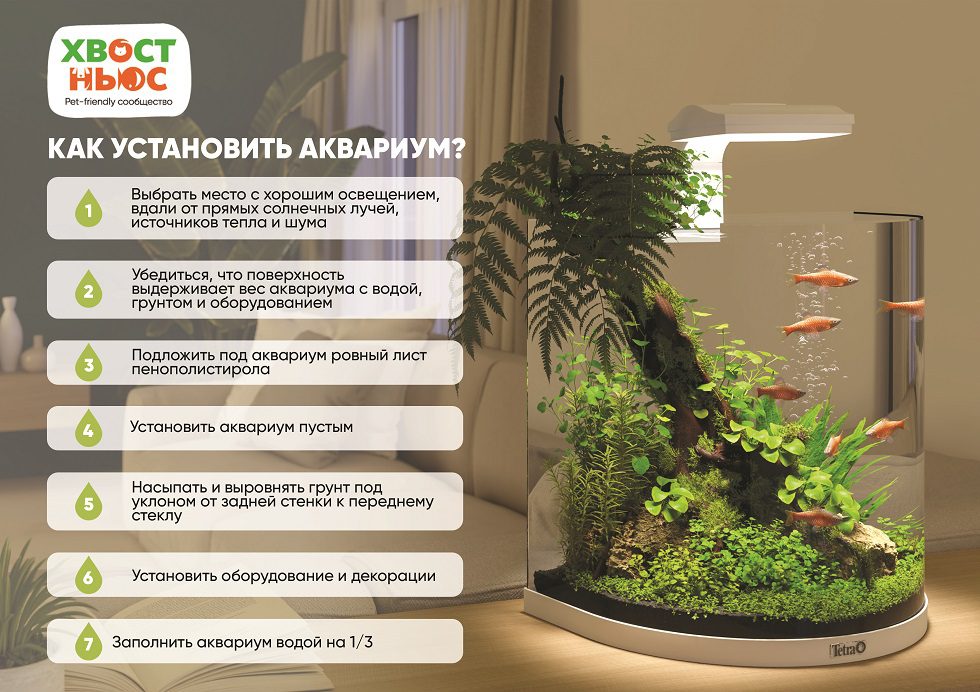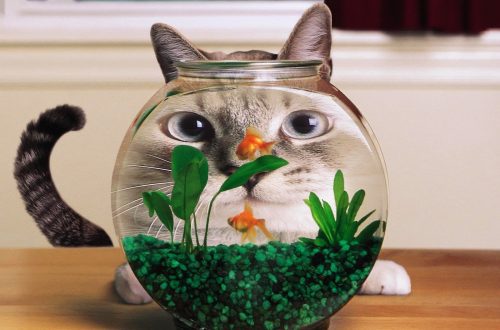
4 tips for setting up an aquarium
PhD and aquarist shares life hacks on how to set up an aquarium from scratch.
Choosing the perfect aquarium and cool equipment is not enough. Problems can start after: when you install an aquarium, put equipment in it and launch this spacecraft to take off. I’ll tell you about four tricks that will help you avoid mistakes and create the most comfortable conditions for fish.
- Choose a solid surface for your aquarium
First of all, decide: where to put the aquarium. For this, only a flat surface is suitable – without depressions, cracks and protruding elements. So that you, guests, children or active pets do not accidentally hit the aquarium, make sure that it fits on the surface entirely – does not protrude beyond it even with one edge.
Furniture for setting up an aquarium must withstand the weight of water: 1 l = 1 kg, the weight of the aquarium itself and the soil: for a 60 l aquarium, about 5-6 kg of soil will be required. That is, if the curbstone conditionally withstands 180 kg, this does not mean that it will withstand an aquarium of 180 liters. To the weight of the water and the aquarium, add the weight of the equipment, decorations, soil and all the inhabitants.

- Keep your fish at a comfortable temperature
When choosing a cabinet for the actual weight of the aquarium, decide where to put it. Window is a bad idea. Direct sunlight will heat the water. No fish will like this temperature fluctuation. In addition, due to an overabundance of lighting, algae will begin to grow rapidly. Then it will be much more difficult to take care of the aquarium.
Your fish will be most comfortable away from sources of heat and noise, but with good lighting. If you put the aquarium in a darkened corner of the room nearby, without the right equipment, the fish can get sick and die. With a heater you can regulate the temperature, with a lamp you can create the right lighting, a filter will ensure the right water quality, and a compressor will provide the right level of oxygen in the water. Comfortable temperature for fish in the aquarium:
– up to 25°C for cold water,
– from 25°C for tropical.
Do not allow temperature fluctuations above 2 ° C, otherwise the fish may get sick and die.
In addition to the correct temperature, the fish need cleanliness and oxygen. And the right filters help with this, creating flow and aeration. For more efficient operation, some models combine sponges and carbon filters.

- Set the aquarium empty
Now it’s time to build the aquarium. The main mistake of beginners at this stage is to install equipment in the aquarium, fill it with water, and only then try to drag the heavy structure to the desired corner of the room. This is not only inconvenient, but also dangerous. So you risk breaking the aquarium.
The correct solution is to set the aquarium empty. First, I recommend placing a flat sheet of polystyrene foam on the surface, and already put an aquarium on it. This will help smooth out any imperfections. Without a substrate, these irregularities will create an additional load on the glass.
- Fill in the correct order
And now, when you have already installed the aquarium, it’s time to fill it. If there are plants in the aquarium, the first step is to fill in the nutrient substrate. Then fill in the soil. I recommend laying it out in a layer of 3 cm under a slope from the back wall to the front glass: this will make it easier to clean the aquarium.
It is dangerous to fill in ordinary beach sand and other materials not intended for an aquarium instead of professional soil. They may contain parasites and substances toxic to fish.
After the ground, move on to the technique and scenery, where the fish can hide and rest. If there is no such place, the fish will behave restlessly. After that, fill the aquarium with water 1/3. Place the plants you plan to grow. To avoid competition, keep species with the same growth rate in the aquarium. If you are just gaining experience in the aquarium hobby, I recommend choosing Vallisneria, Echinodorus, Anubias – they are the easiest to care for.
Finally, I have compiled a visual cheat sheet for you: how experienced aquarists decorate an aquarium. Do the same right now!






